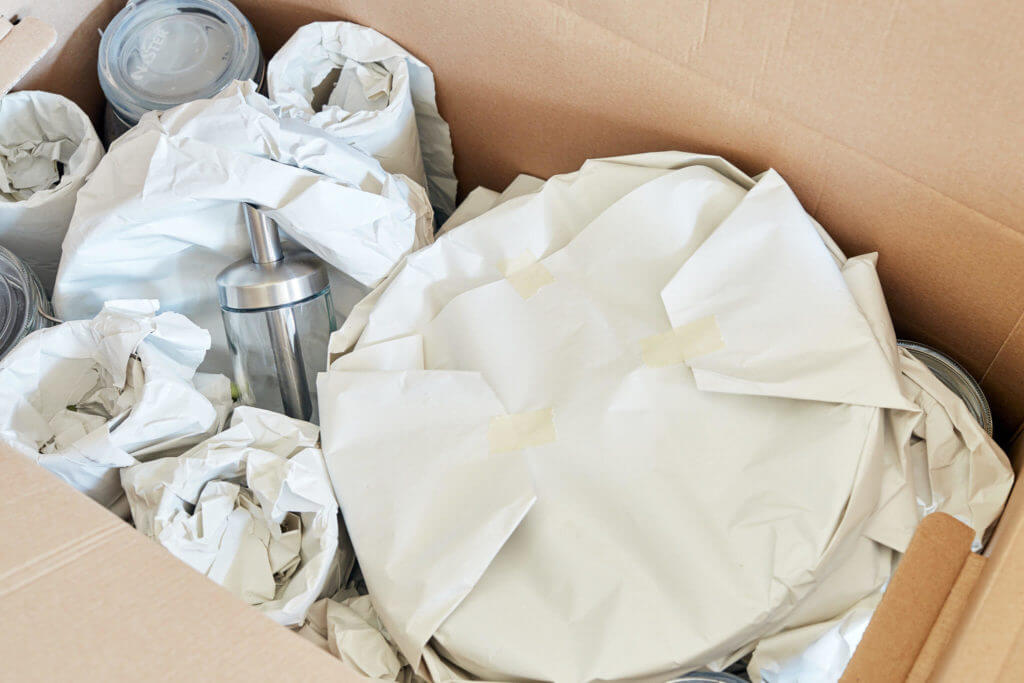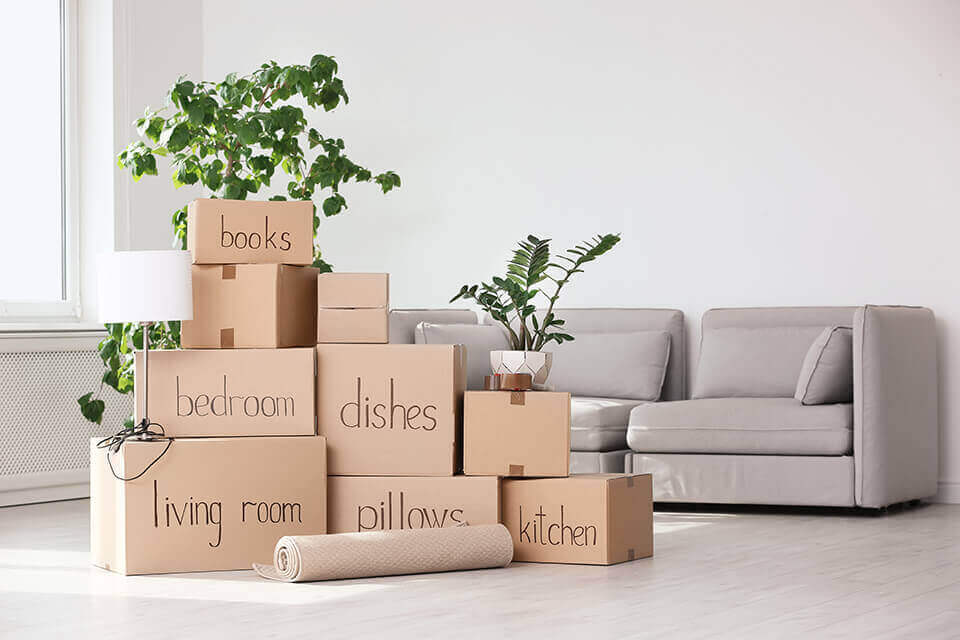Want to avoid the chaos in your apartment when relocating cross country? The only thing that can save you from losing your nerves, time, and money are the right moving hacks. There’s a lot going on at once when you’re moving across the country, and you’ll require some help if you want for everything to go as planned. Use the skill and knowledge of reputable cross country movers and relocate as a professional.


Every long-distance move asks for thorough preparation and organization, we all know that. But what should you do when all the moving and packing becomes too complicated? What if your belongings have to be protected additionally because they’re not going to your new home directly, but to storage? There are many hacks that you maybe didn’t know that can make the moving stress go away, so follow our guide and learn a few handy ones.
Don’t even start looking at the hacks to make moving easier if you haven’t decluttered your house or apartment. This crucial step will help you immensely, whether you’re looking for the cheapest way to move out of state or just moving to a smaller home. Even a last-minute moving isn’t a good excuse for not throwing away something you don’t require and taking it to your new place. Go through your house, see what is (or has become) useless, and decide whether you will donate it, throw it away or sell it. This is one of the first things to do before moving – you can find out how to have a successful garage sale and earn some money from the things you don’t want, or you can donate clothes for the homeless.
Not only that your move will become cheaper because you’re carrying less stuff, but you’ll also feel a huge relief when you see that a big load of unnecessary items is leaving your place. That also means that you’ll have less to wrap, pack, and unpack. It’s better already, isn’t it?

You’ve probably heard this a million times as one of the moving tips and hacks, but did you take it seriously enough? That doesn’t only mean knowing when to start packing for a move or when to cancel your utilities, but also to know how moving in winter looks like, what are the most commonly forgotten things to pack, and during what time of the year is the best to relocate. Read as much as you can, ask your family and friends, and see if they have some recommendations if they’ve moved recently. However, most of the hacks for moving you will hear will be packing-related.
If you have large shelves or many small items in your house, it’s good to take photos or videos of them before you pack them. This also works with stuff that needs to be disassembled. It’s an easy reminder and a great answer on how to organize your move.
Leaving your apartment to get more tape, or bubble wrap as the movers are entering your home isn’t the best scenario. Get extra of each supply just in case – you never know exactly how much you will need, and it’s always better to have more and give them to someone, than to chase for supplies in a day before the moving.
You don’t have a lot of stuff, and you think that the whole move will take a couple of hours? Imagine a sound from a quiz beeping – wrong. Packing is a very detailed task, and it should be done patiently, without a clock ticking above your head. Without a good pack, your items won’t be protected well, and you might end up with a lot of broken pieces, especially when moving cross country.
There will be some screws or other small parts that are easily lost during relocation, so don’t rely on pockets, big bags, or some other places. Zip locks are a great way to prevent losing anything small, but also to secure that bottles with liquid inside don’t spill. If you’re taking your shampoos and you don’t want them spilled all over other stuff, place them in a ziplock and they will be safe.
This could be time-consuming, but it’s very important to know how to make an inventory list when moving. Stuff you’ll be relocating can get lost or mixed up, so start going from room to room and writing down what you are taking and in what quantity.
Even if your move isn’t for the next two months, there is always stuff that can be packed. Those are usually off-season clothing, books, dishes you don’t use every day, etc.
Perishables can’t be moved long-distance, so plan your diet for the last two weeks before the day of the move. If there’s any food left, you can invite friends and family over and have dinner, or you can donate to a homeless shelter or some charity.
Your moving essentials such as underwear, some clothing, toothbrush, toothpaste, soap, or a charger should be in a separate suitcase or a handbag that you can carry with you in a car, or in an airplane if you’re getting auto transport services. Pack them last, and don’t lose it out of your sight. Depending on how far you’re relocating, there should be spare clothing for at least a week, just like when you’re going on a holiday.
Every empty bag, plastic bin, laundry basket, plastic containers, or a suitcase can be used as a box. Fill them up with clothes, shoes, or any other stuff, and secure them well so they don’t open.

There are plenty of types of packing materials, and paper surely is one of the most important ones, but the truth is – it can be replaced with something better. Since every guide that explains how to relocate fragile items says that you have to wrap up everything in the paper, you probably haven’t even thought about any other packing hacks for moving. All of your breakables can be wrapped around with any kind of cloth you have – towels, sweaters, shirts, beddings, or even jackets and blankets. It will save you space and protect fragiles at the same time.
Broken glassware is not only a material loss, but it can be dangerous if not handled properly. When handling plates, cover each one in paper or in cloth, and stack them vertically. It will save space and prevent breaking. If you want to have a perfect and safe relocation, you have to properly cover every breakable piece with paper, bubble wrap, or cloth, and they should be secure.

When picking out moving boxes online, you can see that they are cheap, but in the end, the price adds up, especially if you have lots of stuff. They need to be high quality and durable, but paying a lot of money on cardboard boxes in a period when you need every cent is a bit too much. Every store has boxes they don’t need. Check liquor stores, supermarkets, or even libraries.
If the cardboard isn’t in perfect condition, tape it well, or put some additional layers inside to make it more sturdy. If they don’t have handles on the side, take a knife or a scalpel and cut out handles for easy carry. Once they’re ready to be filled with your belongings, try some labeling advice for your relocation, such as color-coding of the boxes. Another important thing is not to overfill the box, so it doesn’t tear apart.

Another one of great life hacks for moving is knowing how to pack electronic devices. Handling expensive and delicate, but large items such as TVs, stereos, computers, and laptops isn’t very easy, and you might consider getting insurance for them. When a relocation company handles electronics, they have special wooden crates made just for those items, but in this case, you can use regular cardboard boxes. Before unplugging them and disassembling, take a photo of the cords plugged in the device. Then, try to separate them into smaller pieces and wrap each one with lots of bubble wrap and paper. You can also use foam peanuts to fill the extra space in the box. Then, take the chords, label which one belongs to what, and roll them into a paper towel or toilet paper rolls to avoid the tangling.

Another great tip that will help you a lot when it comes to how to organize unpacking after you move in a new home is leaving all clothing on hangers, and relocating them that way. Take a garbage bag (a big, 45 gallon one) that has handles, place the clothes inside, and tie the handles around the hook of the hangers. When you get to your new place, just take the bag down and hang the clothes – a piece of cake. For the clothing that isn’t hanging, roll them up instead of folding. That will save a bunch of space.
We could go on for days with little tips and advice for handling and wrapping your household items, but this already could be too much trouble. If you don’t have enough time or will for handling everything properly, avoid all of this by hiring a professional long-distance moving company. They offer full-pack service where experienced movers handle every item in your home.
Long-distance moving can be exhausting, and especially so if you haven’t moved before and you want some first apartment tips. If you want every step of the way to go perfectly as planned, then the best solution is to get a team of professionals that will handle the whole relocation process, including the packing. Your only job will be to provide them with a detailed inventory list, and they will do all the work, without mistakes or broken pieces.